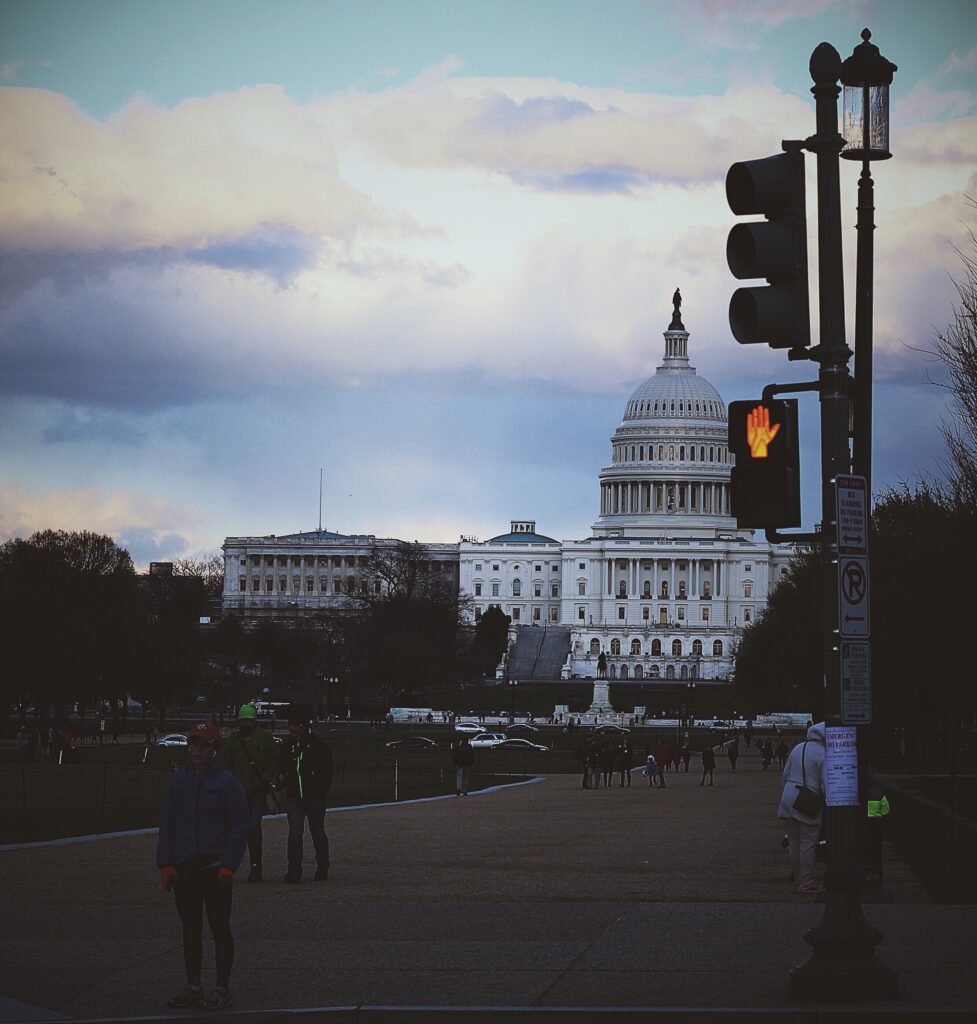
All Eyes on Telehealth as Federal Shutdown Continues
EDITOR’S NOTE Day 3 of the federal shutdown continues. This article by Mark Spivey is part of a special section today published by RACmonitor and
The ripples of moist sand suggested the undulating waves momentarily had retreated deeper into the Adriatic. Straight west was Croatia. Smugglers from the entrenched late-medieval fortress of Grottammare had landed beneath my feet a century ago, bringing wood taken from the ancient Kingdom of Raška and returning with wine, olive oil, and fine cloths from Italia. The lone New Yorker resembled a floor sweeper wondering what had happened now that the party was over and the mélange of vacationing Etruscans had returned to their fields and warm homes.
Somehow, the situation seemed terribly temporary. Far away to the north in Veneto, Lombardy, and Emilia-Romagna, a relentless terror from Asia had arrived. Small communities were getting sick. People were expiring. Italy was beginning to panic as medical facilities were overwhelmed with a mysterious affliction for which there was no cure.
Deep in the subconscious of every European is memory of the bacterium Yersinia Pestis, the Black Death. It had come to Europe through Central Asia, travelling along the Silk Road from one caravansary to another. It reached Crimea in 1347 and eventually killed more than 60 percent of Europe’s population. To fight the plague, Pope Clement VI had surrounded himself 24 hours per day with giant bonfires.
The first great pandemic, the Plague of Justinian, had attacked in 541, but that was too far back in time to register in the collective consciousness. But everyone had a primal memory of the Black Death, which had continued to kill until the early 20th century.
Sitting down to a wonderful seven-course meal at Sottocoperta Osteria de Mare helped only temporarily to take the edge off the growing tension. Again, the plague was coming. Again from Asia. Again without mercy.
Vacation was over. Time to return to Manhattan. Boarding the Dreamliner at Rome’s Leonardo da Vinci-Fiumicino International Airport, hundreds of American students angrily took their seats, having been ripped away from their coveted year in Florence or Rome, studying the language, the architecture, the food, and the art.
At JFK International, everything looked normal. We were expecting a reading of our temperature, or questions about our health, or where we had been. Nothing. The staff at JFK looked as though we had just disturbed their nap. Then, the yellow cab to Midtown.
As a safety precaution, we put ourselves into self-quarantine for 14 days. At first, it felt special. “Oh, you were in Italy?!” “You are in quarantine?” “Wow! What’s it like?”
Living in the Epicenter
As soon as our self-quarantine was over, the President declared a national lockdown. New York City quickly became the epicenter for this horrible pandemic. Soon it became clear we would have to remain inside far longer than another two weeks.
This once-vibrant city is completely closed down. Restaurants are shuttered. Once located in the bottom floor of Citibank’s world headquarters was the Hale and Hearty Soups outlet. From my window, I watched trucks arrive in the middle of the night.
The stoves and other contents were stripped away. Afterwards, the windows were boarded up. This is happening to food outlets everywhere. Some go away, never to come back. The landlord gets no rent. The workers lose their jobs. The city loses its revenues. The neighborhood starts to look like those abandoned Chinese cities that were built, yet never populated.
Looking out my window, I see Lexington Avenue. Normally, on a weekday, it is full of traffic. Cars, trucks, taxis, bicycles, joggers, crazy people riding battery-powered single wheels, police, ambulances, tourists – the variety is endless. Now, it is empty. The city is quieter than the afternoon of 9/11.
The street vendors are gone. No more Egyptian falafel, no Indian curry, no Jamaican jerk chicken, no more Afghani coffee. My favorite grocery, Citaralla’s, stopped importing uni (sea urchin) from the West Coast. The legendary De Palos Italian salumeria stopped its daily importation from Italy of fresh buffalo mozzarella. The racks of Calabrian spices have vanished. Supplies of Fleur de Sel Le Saunier de Camargue have dwindled.
No longer is it possible to visit Acme Fish in Greenpoint, Brooklyn to purchase fresh smoked salmon, whitefish, chubs, herring, and other delicacies. The highly automated AmazonGo store is still visible, but it is closed, and the shelves are empty.
Linking the landmark St. Bart’s Episcopal Church to the Waldorf Astoria is a secret passageway used by presidents to sneak over to play a discreet basketball game on the hidden court. Now it is sealed off, wiping away generations of tradition. The Kyudo Japanese archery classes are gone. Waters in the heated salt-water pool are stilled. In the Church basement, my karate dojo closed. I went outside one night to work out with my bo stick weapon on the street. Flashing police lights soon surrounded me and drove me back inside.
The Dark Side
By now, we have been isolated in our apartment for 76 days. It is not fun. It is impossible to exercise. We are getting sick of our own cooking. I am on the last volume of the Cambridge History of Political Thought. One might suppose that without the forced isolation, I never would have made it through the chaos of the 19th century.
Like other parts of the United States, New York experienced shortages. Toilet paper. Meat. Now the stores have simply settled into a routine habit of price-gouging. Prices are skyrocketing. My friend paid $18.97 for three boneless chicken breasts. For face masks with the flimsiest of paper, $2.95 is needed. But without the mask, one may enter no store.
Soon New York will be like Germany in the 1930s, when inflation demanded that a wheelbarrow-load of money was needed to purchase even a loaf of bread.
The restaurants are closed. Broadway is closed. All of the offices are closed. New York City is dead.
It also is unsafe, terrifying, ugly, scary, and not at all fun. Crime is increasing rapidly. Muggings are up. Healthcare workers are being robbed and assaulted. We no longer feel safe, even when walking one block to the drugstore. A gang of 12 youths savagely beat a nurse who was heading home from an 18-hour shift. CVS has placed padlocks on its ice cream and all alcoholic beverages. Prior to this, throughout the night, raiders frequently would gather up loads of food, and with impunity, simply walk out.
The subways are full of homeless persons. Many riders do not bother to pay their fare. There is no police presence, and everyone knows it is official New York City policy to not arrest criminals for theft or turn-style jumping. Unless things turn around soon, we can expect riots and looting, then street battles with gangs and organized rampages and mayhem.
There also is economic collapse. New York City has an annual budget exceeding that of 48 states. It is addicted to massive amounts of tax revenue. My property taxes are greater than what I used to pay each month for our mortgage. Parking in the street is $4 per half-hour. Minor parking violations are more than $200. Anyone who goes shopping must pay 5 cents for a cheap plastic bag that is worthless.
The virus has made New York City bankrupt. Ridership of public transportation, the subway and the bus system, is down by more than 80 percent. All of those tax revenues – payroll taxes, property taxes, taxes on taxes, parking fees, commercial taxes, exorbitant sales taxes – they are gone. Yet unlike any business, the city lays off no one. Public-sector unions are the aristocracy of labor. They have guaranteed pensions and secure employment. Someone else is always paying the bill. The Prime Minister of Great Britain once said: “socialism is great, until you run out of other persons’ money.” And New York has run out.
Its economy has been completely destroyed. New York State already was out of money. Of course, it has not yet declared bankruptcy, but it will.
Escape from New York
New York City saw the wealthy and intelligent start their exodus long before the virus emergency. Now, everyone is trying to leave. The exodus volume is accelerating. Those remaining behind will do so not because they still are in love with New York, but because they have no choice. There is no escape, no place to go, no international travel. They are stuck.
I would love to get out. To go anywhere. To dine at Brasserie Georges in the center of the world’s culinary capitol, Lyon. To stand on Sugarloaf in Rio de Janeiro, then eat feijoada (black bean stew) and wash it down with a cachaça caipirinha (sugarcane hard liquor). To enjoy a Ryokan traditional Japanese inn outside of Kyoto. To have an espresso and Pastéis de Nata (custard) at the Jerónimos Monastery in Lisboa.
This is the plague. This may be the darkest part of the past half-century. And all because some genius in Wuhan decided to locate a Level 4 virus research facility smack in the middle of one of the world’s most highly populated cities. After all, there is a reason why we do not build a nuclear fuel reprocessing facility in Central Park.
At least for the time being, there is no future. Rodentologists report that even New York City’s rats are starving. They have been reduced to cannibalizing their young.
The virus, the plague, the abomination from the East, has destroyed not only millions of lives, but it has destroyed the economy, and taken away the breath from the spirit of this once-great city and reduced its hopes to ashes.
The indomitable “can-do” punchy, arrogant, and condescending attitude of New York has been broken. Long ago, New York lost its glow, but now this giant cluster of humanity is struggling for its life. The entire city is on life support. It is crestfallen. New York is a penniless prison.
Is there hope? No, not yet.
But Americans love a comeback story. The floored competitor gets back up and fights. When asked to surrender, the surrounded army division commander sends the reply: “nuts,” then pushes on to victory.
Somehow, we all believe the U.S. will come back, the stock market will come back, the jobs will come back, New York will come back. But no matter what happens, always in the subconscious of even the next generation, there will be a memory of this horrible plague.


EDITOR’S NOTE Day 3 of the federal shutdown continues. This article by Mark Spivey is part of a special section today published by RACmonitor and

As expected, the federal shutdown began early Wednesday morning. What’s unknown is how long it will continue. Neither congressional Republicans nor Democrats appear to be
Please log in to your account to comment on this article.

Sepsis remains one of the most frequently denied and contested diagnoses, creating costly revenue loss and compliance risks. In this webcast, Angela Comfort, DBA, MBA, RHIA, CDIP, CCS, CCS-P, provides practical, real-world strategies to align documentation with coding guidelines, reconcile Sepsis-2 and Sepsis-3 definitions, and apply compliant queries. You’ll learn how to identify and address documentation gaps, strengthen provider engagement, and defend diagnoses against payer scrutiny—equipping you to protect reimbursement, improve SOI/ROM capture, and reduce audit vulnerability in this high-risk area.

Only ICD10monitor delivers what you need: updates on must-know changes associated with the FY26 IPPS, including new ICD-10-CM/PCS codes, CCs/MCCs, and MS-DRGs, plus insights, analysis and answers to your questions from two of the country’s most respected subject matter experts.

This third session in our 2026 IPPS Masterclass will feature a review of FY26 changes to the MS-DRG methodology and new technology add-on payments (NTAPs), presented by nationally recognized ICD-10 coding expert Christine Geiger, MA, RHIA, CCS, CRC, with bonus insights and analysis from Dr. James Kennedy.

This second session in our 2026 IPPS Masterclass will feature a review the FY26 changes to ICD-10-PCS codes. This information will be presented by nationally recognized ICD-10 coding expert Christine Geiger, MA, RHIA, CCS, CRC, with bonus insights and analysis from Dr. James Kennedy.

During this essential RACmonitor webcast Michael Calahan, PA, MBA Certified Compliance Officer, will clarify the rules, dispel common misconceptions, and equip you with practical strategies to code, document, and bill high-risk split/shared, incident-to & critical care E/M services with confidence. Don’t let audit risks or revenue losses catch your organization off guard — learn exactly what federal auditors are looking for and how to ensure your documentation and reporting stand up to scrutiny.

Learn how to navigate the proposed elimination of the Inpatient-Only list. Gain strategies to assess admission status, avoid denials, protect compliance, and address impacts across Medicare and non-Medicare payors. Essential insights for hospitals.

RACmonitor is proud to welcome back Dr. Ronald Hirsch, one of his most requested webcasts. In this highly anticipated session, Dr. Hirsch will break down the complex Two Midnight Rule Medicare regulations, translating them into clear, actionable guidance. He’ll walk you through the basics of the rule, offer expert interpretation, and apply the rule to real-world clinical scenarios—so you leave with greater clarity, confidence, and the tools to ensure compliance.

Bring your questions and join the conversation during this open forum series, live every Wednesday at 10 a.m. EST from June 11–July 30. Hosted by Chuck Buck, these fast-paced 30-minute sessions connect you directly with top healthcare experts tackling today’s most urgent compliance and policy issues.
Happy National Doctor’s Day! Learn how to get a complimentary webcast on ‘Decoding Social Admissions’ as a token of our heartfelt appreciation! Click here to learn more →
CYBER WEEK IS HERE! Don’t miss your chance to get 20% off now until Dec. 2 with code CYBER24